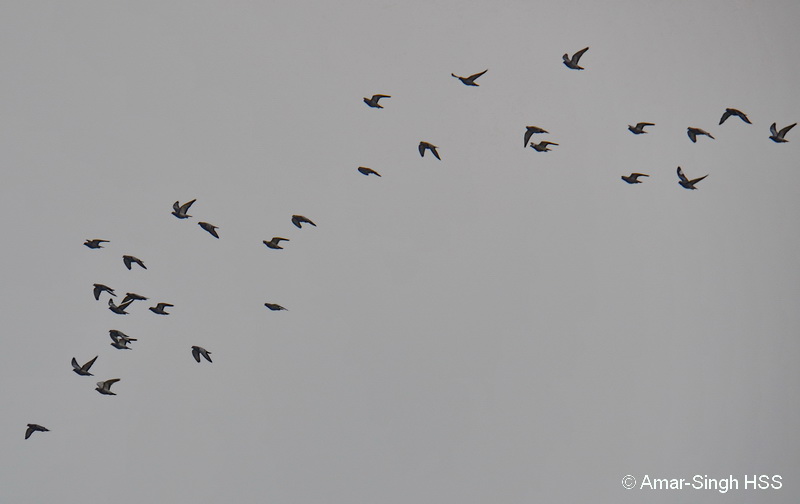“While in Taiwan on two occasions I heard mention about Pigeon Racing but had not paid much attention to it. I was told about tens of thousands of birds taken out to the open seas, in purpose built boats, for racing. I reminded myself to read a bit more on this and have decided to share my understanding of the situation.
“Before I speak about this, can I say that Taiwan and its people continue to impress me. The country is very safe, clean and efficient. The average person is very courteous and helpful and everyone takes pride in the environment; we hardly saw any rubbish strewn about. Much effort is taken to protect the environment and wildlife; half the island has been re-grown with natural forest. But every nation has its blind spots, and for Taiwan, Pigeon Racing is one of them. (Note: Malaysia has many blind spots where nature is concerned and we have a long way to go before we can even approach Taiwan’s level of care for the environment.)
“The Japanese are credited with introducing pigeon racing to Taiwan in the last century. Taiwan is noted to be the nation with the largest number of pigeon racing events in the world, with an estimated half a million persons involved in the racing activity involving 2-3 million birds and prize money reaching billions of New Taiwan dollars (Wikipedia 2019). The racing is illegal but extremely popular and widespread with over 30,000 pigeon breeders, and the total industry value is estimated as exceeding 2 million USD (Peter Amsel 2014). Pigeon coops can be seen all over Taiwan, occasionally on the roof-top of buildings. There are also commercial level, gigantic pigeon coops (see images by Michael Turton 2007). Numerous pigeon racing clubs are present to aid in the betting (gambling) process. The ‘industry’ is now so lucrative that there are ‘professional pigeon kidnappers’ who hold birds for ransom, and earning kidnappers millions of USD (AP Archive 2015). Note that birds are identified by metal tags on the bags (banding) or indelible ink prints stamped on their wings (see images by Joseph Dunstan 2017).
“This all seems harmless on the surface but available data suggest that the vast majority of the birds that participate in races die (survival 1-2%). Data from PETA and others estimate that between 1-1.5 million Rock Pigeons die in the racing each year (Ashley Fruno 2014; Florin 2018). Many of these are young birds in their first year of life (Rock Dove/Rock Pigeon Columba livia life span 5-15 years). In addition birds have to train and participate in many qualifying races, during which they may be discarded (killed) for being too slow. Racing birds die in large numbers because they are taken far out to sea, in purpose built ships, to be released for racing. Racing distances are 200-300 km. Some become disoriented and lost at sea, most have to battle harsh weather conditions (racing happens even in winter).
“Some might argue that without the breeding for racing there would be less Rock Pigeons around. But the enormous death rate is terrifying in its cruelty. As birds go, Rock Pigeons are gentle, responsive creatures that can bond to humans. Although there has been some efforts by the authorities after the 2014 exposure by PETA, the situation has since been allowed to return to status quo. For such an environmental friendly and progressive people, pigeon racing is an ugly stain on the nation. One hope sit will come to an end soon.”
Dato’ Dr Amar-Singh HSS
Ipoh, Perak, Malaysia
5th February 2019
References:
1. From Wikipedia, the free encyclopedia: Pigeon racing 2019. Available online: HERE.
2. Peter Amsel. 2014.Taiwan busts online sports bet ring as PETA urges end to pigeon race fixing. Ayre Media Group. Calvin Ayre Foundation. Available online: HERE.
3. Michael Turton. 2007. The view from Taiwan: Raising and Napping the Racers. Available online: HERE.
4. AP Archive. 2015. Taiwan: Racing Pigeons Latest Craze To Sweep Country. Available online: HERE.
5. Joseph Dunstan. 2017. Asian racing pigeon blown off track, hitches ride to Australia. ABC North West WA. Available online: HERE.
6. Ashley Fruno. 2014. “It Was Raining Pigeons”: Millions Die in Taiwan Sea Races. Available online: HERE.
7. Florin. 2018. Deadliest Flight – Taiwan’s Grueling Sea Races Kill Over One Million Pigeons Each Year. Oddity Central. Available online: HERE.









